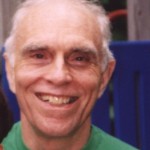Attn: Those curious about Exercise Science
Here are more questions concerning the factors that limit endurance performance that have ‘popped up in my head’ since the 2010 ACSM annual meeting in Baltimore:
- How are motor units (MUs) with fast twitch (FT), slow twitch (ST), or other muscle fibers recruited and maybe derecruited during first ten minutes of constant, locomotor exercise at the ventilatory threshold?
- What’s the latest about recruitment and/or derecruitment of various MUs of during the last half of prolonged exercise to exhaustion at the ventilatory threshold?
- Any psychophysiological differences between individuals with predominantly FT MUs and those with predominantly ST MUs while producing self-selected exercise intensity above the ventilatory threshold?
- How is MU recruitment monitored by the different regions of the cingulate cortex and other subcortical structures?
- How is the prefrontal cortex and its subdivisions involved in anticipatory, proscriptive forecasts of possible motor adjustments during the last half of prolonged exercise to exhaustion at the ventilatory threshold?
- How does the insular cortex, cingulate cortex, etc. determine that an error has occurred while force is being generated during locomotor exercise?
- How does one become aware of changes in our ‘mental state’ during the last half of prolonged exercise?
- How similar are the responses of anterior insular cortex (AIC), when experiencing pain as an unpleasant feeling, to the AIC changes when one becomes aware of weariness, i.e., subjective fatigue?
- What is the mechanism whereby we can talk with ourselves and others, i.e., vocalize, about being weary, as having subjective fatigue symptoms?
More questions associated with an ACSM presentation examining cool-down after exercise session can be found in the post: “Cool Down and Enjoy”
Comments anyone? Any suggestions for pertinent reviews? Any thoughts or personal insights? Additional related questions?
